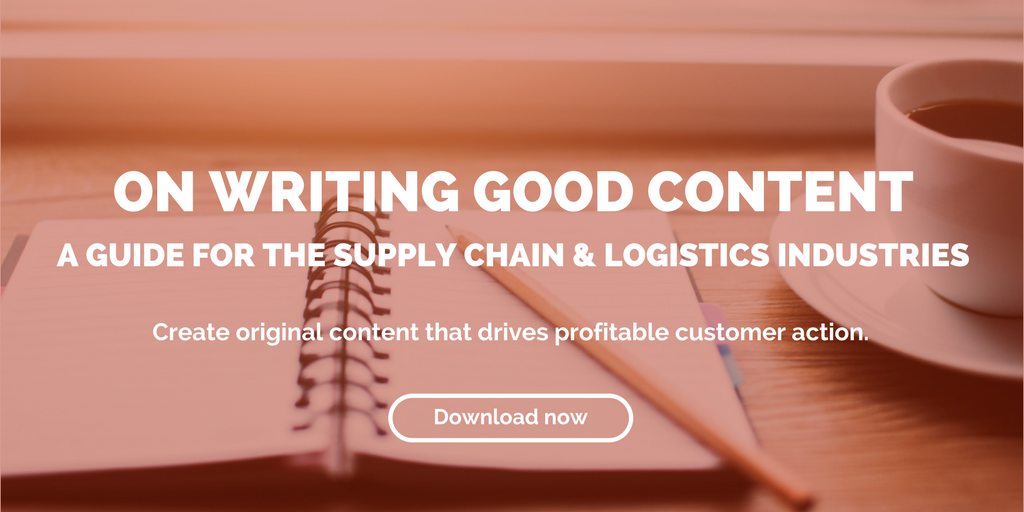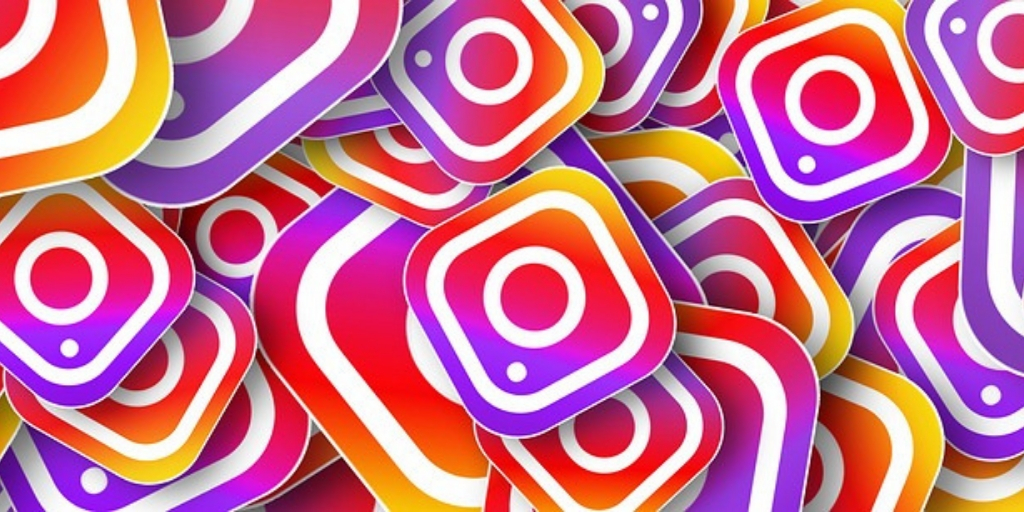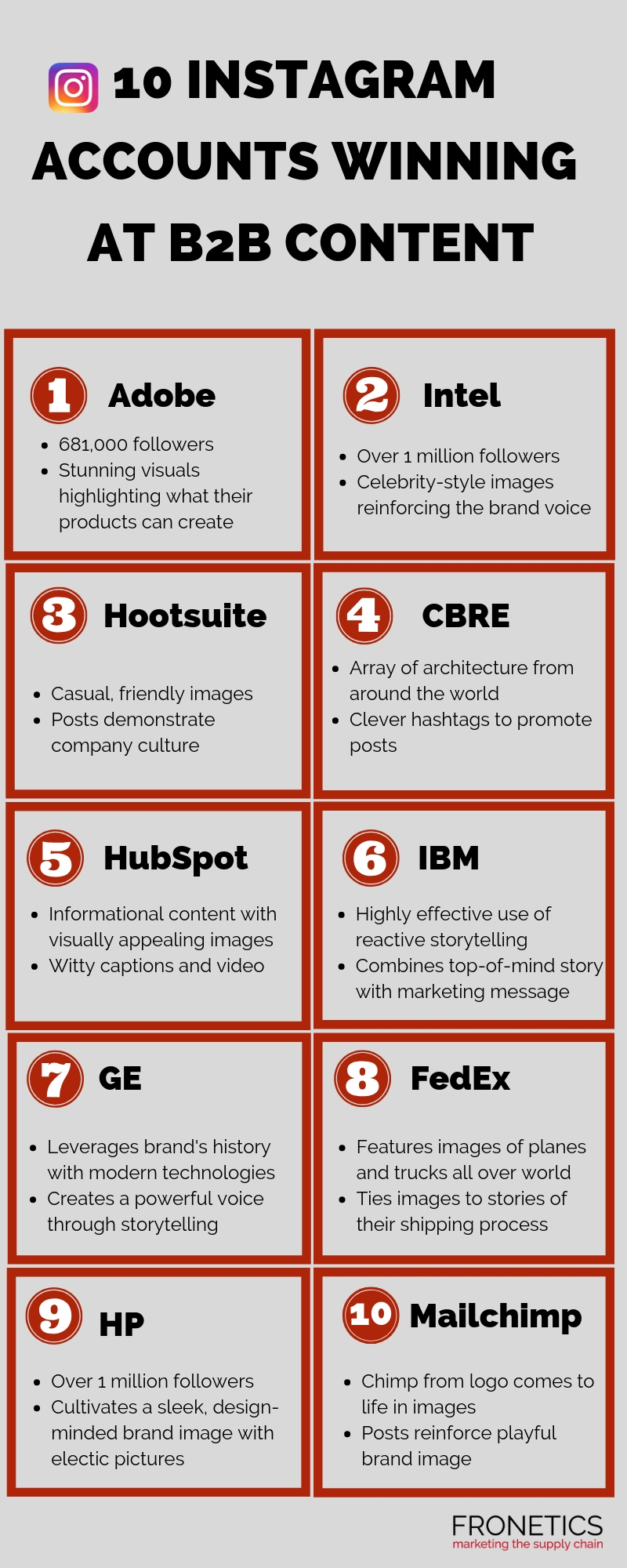
by Fronetics | Jul 31, 2019 | Blog, Current Events, Marketing, Social Media
Also this month in social media news: Facebook strives to attract content creators, and Pinterest debuts new video tools for brands.
Highlights:
- Less than a month after Facebook released details of its new cryptocurrency, the project has met a stumbling block from Fed Chairman Jerome Powell.
- Newly released statistics highlight key growth metrics and lay out expectations for digital marketing in the second half of 2019.
- Pinterest’s new video tools as well as updates from Facebook are geared to content creators and brands.
It’s hard to believe it’s already July and 2019 is at its halfway point. It’s a time when organizations are evaluating their performance thus far, and setting goals for the second half of the calendar year. To that end, both Mobile Marketer and Marketing Dive published key digital marketing growth statistics, and we’ve got the highlights for you below.
Last month, Facebook made news by releasing details of its new cryptocurrency, Libra. Now the social media giant has hit a roadblock, in the form of Fed Chairman Jerome Powell calling for a halt until serious concerns are addressed. Facebook is also making news this month by taking a page out if its competitors’ books in its attempt to attract more online content creators. Read on for details on these social media news items from July 2019.
Fed Chief Calls for Facebook to Halt Libra Project Until Concerns Are Addressed
Following closely on the heels of Facebook’s releasing details of its planned Libra cryptocurrency, U.S. Federal Reserve Chairman Jerome Powell said that the project “cannot go forward” until serious concerns are addressed. “Libra raises many serious concerns regarding privacy, money laundering, consumer protection, and financial stability,” Powell said before the U.S. House of Representatives Financial Services Committee.
The Fed chief’s tough comments not only underscore the regulatory hurdles facing Libra, but put pressure on the project, and dented the price of Libra’s forebear, bitcoin. The price of bitcoin fell by around 7% during his 3-hour testimony. Powell also called for regulatory review of the project to be “patient and careful,” while pointing to the fact that existing rules don’t adequately fit digital currencies.
“It’s something that doesn’t fit neatly or easily within our regulatory scheme, but it does have potentially systemic scale,” said Powell. “It needs a careful look, so I strongly believe we all need to be taking our time with this.”
Facebook spokeswoman Elka Looks responded to the testimony in an email to Reuters: “We are very much aligned with the Chairman around the need for public discourse on this,” wrote Looks. “This is why we along with the 27 other Founding Members of the Libra Association made this announcement so far in advance, so that we could engage in constructive discourse on this and get feedback.”
2019 Key Digital Marketing Growth Statistics Released
The midyear release of statistics from Marketing Dive and Mobile Marketer are important for brands and marketers to pay attention to. In the ever-shifting world of digital marketing, these statistics and trends offer valuable insight into where resources and time are best devoted.
Highlights from the reports include:
- Global online advertising spend is on track to grow 7% this year. That’s up from the 4% forecast in December 2018.
- Location-based marketing will likely grow 14%, reaching $24.4 billion in advertising spending by the end of 2019.
- 43% of all advertisers plan to increase spending on influencer marketing by April of 2020.
- Social referral traffic to retail ecommerce sites has grown by 110% in two years.
Facebook Strives to Attract More Content Creators
In an effort to attract more content creators to its platform, Facebook is giving videos more ways to make money. Observers have noted that the reigning social media giant is “pulling inspiration from other platforms to let you throw cash at your favorite video creators in the form of subscriptions or tokenized ‘stars’ that pay them a penny.”
Facebook’s announcement of its new video developments comes just ahead of VidCon, the world’s biggest conference for online video creators. It follows on the heels of three years of investments in the network’s video services and is in line with consumer trends toward video consumption.
Pinterest Debuts New Video Tools for Brands
Image-curating platform Pinterest is ramping up its video capabilities, in line with a larger consumer shift in viewing habits and a boost from advertisers in spending on social video. New video features include an improved uploader, video tab, lifetime analytics, and Pin scheduling.
The updated video uploader “enables businesses and creators to seamlessly upload video directly to Pinterest to engage with new and existing audiences, and access latest metrics,” according to the announcement.
Pinterest’s announcement points out that unlike on other platforms, videos don’t disappear (as they do on Instagram and Facebook Stories after 24 hours). To that end, their video analytics tool will allow businesses to gain insight into a video’s performance over its lifetime.
Related posts:


by Fronetics | Jul 16, 2019 | Blog, Content Marketing, Current Events, Logistics, Marketing, Supply Chain
With the ubiquity of mobile phones and the ease of SMS messaging, text-based marketing holds plenty of potential for supply chain marketers.
Highlights:
- Many of marketers’ hesitations about text-based marketing are based on misconceptions.
- Research shows that text outperforms email in open and click-through rates.
- Currently, there’s a competition vacuum as business have been slow to adopt this channel.
Text-based marketing presents something of a quandary for supply chain businesses. Many marketers are understandably reluctant to make use of this communication channel, fearing the possibility that it will be perceived as intrusive and cause leads to turn away.
But, in fact, many of the fears about text-based marketing are actually misperceptions. As Ardath Albee, CEO of Marketing Interactions, Inc. puts it, “When done strategically, respectfully, and in a contextually relevant way, the profitable benefits of SMS marketing easily supersede the most common pitfalls of this unique channel.”
Here are some common misconceptions about text-based marketing.
4 popular misconceptions about text-based marketing
1) SMS marketing means sending out unsolicited text messages.
Most of us have gotten them: the text from a random number — perhaps advertising health insurance, warning of a compromised bank account, or congratulating you on winning a gift card. This kind of spam is what many marketers think of when they hear “text-based marketing.” No legitimate business wants to be associated with this sort of tactic.
You may be surprised to learn that legitimate text-based marketing doesn’t work this way at all. According to Justin Mastrangelo, founder of JA.TXT text message marketing software platform, “Not only is sending unauthorized text messages terribly ineffective, it’s illegal and could lead to lawsuits and penalties.” Instead, your contacts will need to opt in to receive text messages, so they will be expecting them.
2) I need my own shortcode.
Many small and mid-sized businesses shy away from text-based marketing based on the hassle and expense of obtaining their own shortcode. While it’s true that for large brands, obtaining their own shortcodes can be worthwhile, most moderately sized businesses don’t actually need a shortcode of their own.
Most SMS marketing providers furnish their clients with their shared shortcodes, meaning that your business would likely not need to spend the time or money to obtain and set up a shortcode.
3) Text-based marketing doesn’t engage leads.
When many of us think of text-based marketing, we imagine it to be a one-way street, with businesses seeking to grow a massive list of numbers and blasting them with texts. Because we all have experience with SMS spam, we naturally assume that texts from businesses will be ignored.
But the reality is that since prospects need to opt in to receive texts from your business, they are quite likely to engage with them, as texts are immediate and easy to react to. Businesses “often overlook the two-way capabilities of SMS,” says Mastrangelo. “Many organizations have captured email addresses, ZIP codes, survey responses, product numbers, and more through text message.”
4) My audience doesn’t want texts from my business.
Because text-based marketing inherently feels more intimate and immediate than other forms of digital marketing, marketers are often leery of taking the leap, believing that prospects will just be annoyed to receive texts.
But, as it turns out, text-based marketing is not unlike other forms of digital marketing: your audience absolutely wants to receive it, on one condition – you need to be providing value.
7 reasons to consider text-based marketing
Now that we’ve cleared up some of the most widespread misperceptions about text-based marketing, here are six reasons why we think you should consider it.
1) Your audience prefers it.
You’ll probably be surprised to learn that recent research shows that 85% of mobile device users prefer a text from businesses over phone calls or emails.
2) Texting is what people do most on their phones.
While email and social media marketing generally capture most of the buzz, users actually spend more time texting than doing anything else on their mobile devices.
3) Get ahead of the competition.
Since B2B businesses have generally been hesitant to integrate text-based marketing, there’s currently a competition vacuum.
4) It works throughout the buyer’s journey.
As with email marketing, text-based marketing can be effective at every stage of the buyer’s journey, and the highly personal nature of the medium fosters better relationships and customer experience.
5) SMS marketing is interactive.
Text-based marketing is actually an excellent way to promote engagement, since users opt in to initiate it, and responding to and interacting with texts is extremely easy.
6) It’s an ideal precursor to chatbots.
We’ve written a lot about chatbots, and how they can be a great tool for the supply chain. Text-based marketing is the perfect testing ground to see how your content will fare with chatbot marketing.
7) Text-based marketing outperforms email.
You read that right. By two of the most important metrics, open and click-through rates, text-based marketing actually outperforms email. While email has an average open rate of 22% and a click-through rate of 6%, texts have a whopping 97% open rate and a 36% click-through rate.
The bottom line: give text-based marketing a try
Digital marketing is a many-headed hydra, with new channels opening up all the time, like text-based marketing. This channel holds tremendous untapped potential for businesses, thanks to the immediacy of the medium, the ubiquity of mobile devices, and the high engagement rate. Savvy marketers will jump on text-based marketing now and get ahead of the competition.
Related posts:


by Fronetics | Mar 15, 2019 | Blog, Marketing, Marketing Automation, Packaging, Supply Chain
Packaging industry marketers: check out these marketing automation tools for email workflows, social media scheduling, and customer relationship management.
Highlights:
- Customers increasingly expect packaging to be personalized to suit their needs.
- Personalize leads’ interactions with your business through automated processes.
- Get help with email workflows, social advertising, and customer relationship management.
Lately it seems like everyone is talking about marketing automation. As B2B buyers increasingly demand personalized experiences through the buyer’s journey, marketers’ jobs are getting tougher, as they need to provide custom lead-nurturing content to all prospects in their databases. This is particularly true for the packaging industry, as B2B customers expect that packaging will be highly personalized to suit their needs.
And that’s where automating marketing tasks can help.
The term “marketing automation” refers to a variety of tools used to automate the process of personalizing leads’ interactions with your business. The sheer variety of these tools can sometimes be overwhelming — so we’ve pulled a few of our favorites in the categories of email workflows, paid advertising, and customer relationship management.
6 marketing automation tools packaging marketers
Email workflows
1. Customer.io
This tool lets you send targeted messages to your customers, crafting them based on how they interact with your business and making personalized messages simple. You can also keep track of conversions and create customer profiles. Our favorite part? It integrates with your mobile app or website, letting you see data in real time and trigger actions by adding in predefined rules.
2. Constant Contact
This powerful tool has some features that are unique — and can take your marketing capabilities beyond the basics. Beyond setting up and managing an automated database, Constant Contact offers Facebook fan promotion, coupons and deals, and event management.
Paid advertising tools
3. AdRoll
This is an extremely effective tool for retargeting customers through re-engagement on Facebook, Twitter, and elsewhere on the web. It offers cross-device and cross-platform retargeting capabilities, as well as flexible segmentation, letting you provide customized experiences that dramatically improve your marketing efficiency. It also offers customized budgeting and full control over ad spend.
Customer relationship management (CRM)
4. Pardot
Pardot is an all-inclusive marketing automation suite, but it’s particularly strong for amping up your engagement with CRM integration. It’s a great tool for helping your sales team shorten the sales cycle. And, in addition to CRM integration, it offers email marketing, lead nurturing, lead scoring, and ROI reporting.
5. Marketo
This cloud-based marketing software lets you drive revenue with lead management and mobile marketing. It not only helps build customer relationships, but it helps you sustain them as well. Best of all, you can try it out for free until you’re sure it’s right for your business.
Bonus all-in-one tool
6. HubSpot
HubSpot is an inbound marketing tool that lets you generate leads, close deals, and manage your sales pipeline from start to finish. It integrates beautifully with a content marketing strategy, with the goal of turning outbound leads into inbound ones. It includes revenue reporting, custom-event reporting, custom-event automation triggers, predictive-lead scoring, contacts and company reporting, and event-based segmentation.
What marketing automation tools are you using to create efficiencies in your packaging business?
Related posts:


by Fronetics | Feb 19, 2019 | Marketing, Social Media
Need some Instagram for B2B marketing inspiration? These 10 brands are getting it right.
Highlights
- Instagram is a great opportunity for B2B businesses.
- Avoiding blatant sales or advertising pushes is key.
- Successful accounts engage users with interesting visuals and/or provide them with value through informative content.
Instagramnow boasts over 1 billion monthly active users, making it one of the most popular social media platforms out there. It’s a tremendous opportunity for businesses. In fact, recent research has shownthat 66% of brands now use Instagram.
But many B2B marketers are still struggling to find their footing on this highly visual platform. Since we could all use a little inspiration now and then, here are 10 brands that are crushing Instagram for B2B marketing — and what we like about their presence.
10 brands that are nailing Instagram for B2B marketing

(Made with Canva)
1) Adobe
With 681k followers, Adobe (@adobe) is a fortunate brand when it comes to Instagram in that its product naturally lends itself to the visual medium. Its account boasts some truly stunning visuals, highlighting what Adobe products can create.
2) Intel
The tech giant Intel (@intel) cultivates a celebrity-style image, giving its over-a-million followers an inside glimpse into big events the brand plays a role in, like the X Games, Grammys, and glitzy tech conferences. Each of the carefully curated images reinforces the brand’s voice, and captions do a great job of detailing exactly what the brand does in the tech space.
3) Hootsuite
Social media management dashboard Hootsuite (@hootsuite) does a fantastic job of showing brands their social media know-how, right in its Instagram profile. The company cultivates a casual, friendly image and posts content that demonstrates company culture. From team building photos to office dogs, Hootsuite makes followers feel like they’re getting to know the brand.
4) CBRE
Global commercial real estate firm CBRE (@cbre) is a phenomenal example of finding beauty within the context of its operations. The brand’s Instagram feed features a stunning array of architecture from around the world, with clever use of hashtags.
5) HubSpot
Here’s a company getting content Instagram for B2B marketing right. HubSpot (@hubspot) consistently provides value to followers, posting informational content. Rather than letting it get boring, the brand keeps content visually appealing and makes clever use of captioning and video.
6) IBM
Tech juggernaut IBM (@ibm) has made highly effective use of reactive storytelling on Instagram. This method of storytelling combines a top-of-mind story or idea with a compelling marketing message. IBM uses it during popular or inspiring events, demonstrating how it’s making use of the brand’s technology.
7) General Electric
It’s a household name brand, and it’s over a century old. General Electric’s (@generalelectric) Instagram presences does a great job of leveraging the brand’s history, highlighting its involvement with important developments in defense, aviation, and technology. It’s a great example of creating a powerful voice from a brand through storytelling and tapping into the audience’s nostalgia.
8) FedEx
FedEx (@fedex) is a prime example of a B2B brand that makes the absolute most of what it does to create a compelling story for its Instagram content. The account features photos of airplanes and trucks all over the world, telling the story of how the carrier cares for and ships products in its care.
9) HP
With over a million followers HP (@hp) cultivates a sleek, design-minded brand image on Instagram. It capitalizes on subtlety and style, with eclectic images that never feel overtly promotional but that highlight the brand’s innovation.
10) Mailchimp
Email marketing company Mailchimp (@mailchip) truly gets the most out of its whimsical logo. Its Instagram content has given the playful chimp logo life and transformed him into a personality and voice for the brand. The image is quirky and fun, and Mailchimp’s Instagram presence reinforces and capitalizes on that.
What companies do you think are doing Instagram for B2B marketing right?
Related posts:


by Fronetics | Jan 23, 2019 | Blog, Current Events, Logistics, Marketing, Social Media, Supply Chain
Supply chain and logistics companies: here are your key takeaways on digital marketing trends from the Content Marketing Institute’s 2019 survey.
Highlights:
- For 2019, resolve to put your audience first.
- Building audience trust is crucial.
- Make sure your content is performing well by keeping pace with changes to search engines.
The Content Marketing Institute has published its ninth annual survey, giving insight into the most significant digital marketing trends and priorities for 2019. We’ll get into some key takeaways in detail, but perhaps the most striking finding was one that we’ve been talking about for years.
Of the top performing B2B marketers surveyed, the vast majority (90%) reported that they “prioritize the audience’s informational needs over their sales/promotional message.” That’s a powerful statistic. And when you consider that of the least successful B2B marketers, only 56% doing the same, it’s hard not to agree that the success gap is accounted for by this prioritization.
Digital marketing trends in 2019: making the audience a priority
Looking at the key trends from 2018, which will set the pace for 2019, some overall themes emerge. Foremost among them is the need to put audiences first. When 96% of the most successful B2B marketers report that their organizations have “built credibility and trust with their audience,” it indicates that those organizations have been highly effective at listening to their audiences and delivering value with their content.
Savvy marketers going forward will devote time and resources to researching the needs of their audience. Currently, only 23% of marketers are using email to encourage audience participation, build community, and bring new perspectives to their efforts. Not only that, but only 42% report seeking conversations with customers as a form of audience research.
Successful marketers in 2019 will lead the charge, putting email and other forms of digital marketing to use not only to publish their own content, but to form a deeper understanding of the needs and perspectives of their audience.
3 key digital marketing trends for 2019
1) Email campaigns and educational content win the day.
The majority (58%) of CMI’s survey respondents report that they have successfully used content marketing to nurture subscribers, audience, or leads within the past year. Their most successful methods were email (87%) and educational content (77%).
[bctt tweet=”When it comes to building trust among your audience, and nurturing relationships with prospects, educational content can be your best friend.” username=”Fronetics”]
We’ve written before about the overwhelming preference among B2B buyers for educational content like case studies. When it comes to building trust among your audience, and nurturing relationships with prospects, educational content can be your best friend. Similarly, email marketing, when used strategically, is an ideal way to usher prospects down the sales funnel with your content. For more insights, take a look through our top 7 email marketing posts from 2018.
2) Video continues to gain popularity.
We talk a lot about the value of video marketing for the supply chain. Once again this year, video has continued to increase its popularity. More than 50% of survey respondents increased their use of video marketing. Interestingly, a majority also bumped up their use of text-based digital marketing, as well as images (such as infographics, photos, and charts).
Video is on the rise all over the internet, and it gets easier all the time to create focused, engaging, and creative video content to market your business. That being said, successful B2B companies in the supply chain are increasingly outsourcing tasks like videography in order to ensure optimal video strategy, creation, production, and distribution across social media and content platforms.
3) SEO and search algorithms are a concern.
CMI’s survey asked about content marketing issues that organizations are concerned about and found that 61% are worried about changes to SEO/search algorithms. A significant minority (45%) are also concerned about changes to social media algorithms.
It’s true that just as people are changing how they search, search engines themselves are shifting their algorithms, becoming more sophisticated, and making the simple keyword model rapidly outmoded. Keeping up with the change can be overwhelming, but resources exist to help you. Our four-part series on writing for SEO can help you adjust your strategies and provides guidance on topic clusters and pillar content, as well as how to evaluate the success of your content.
What other digital marketing trends are you looking out for in 2019?
Related posts:











